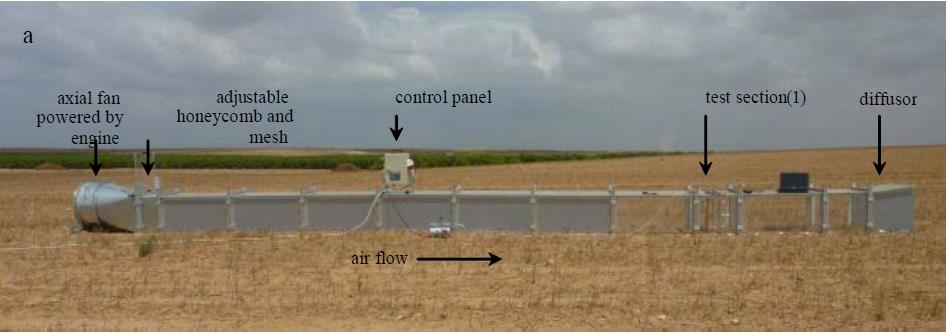Amadee-20-SANDEE
Details
| Acronym | SANDEE |
| Description | Sand transport during Aeolian processes in the Negev Desert: Electrical Effects and implications for Mars |
| Principal Investigator (PI) | Yoav Yair |
| Organisation | School of sustainability, Interdisciplinary Center (IDC) Herzliya |
| Co-Investigators | Itzhak Katra, Dep. of Geography and Environmental Development, Ben-Gurion Univ. of the Negev, Israel |
Summary

The BGU portable wind tunnel, (c) SANDEE team
When small airborne dust particles, carried by the wind, collide and rub against other
suspended particles or against the surface, they may redistribute charge between them. This
leads to the phenomenon of the electrification of mineral dust clouds. The efficiency of the
process and the sign of the charge a particle acquires depends on its properties, like e.g. shape
or mineralogy. By analogy to these processes on Earth, it is to be expected that sand- and dust
storms on Mars are electrically charged to some degree, as well. This would have important
implications for lander operations, orbiter-lander communication and future human missions.
The SANDEE experiment aims to address several scientific questions regarding the described
phenomenon by simulating sandstorms and measuring their dynamic, mineralogical and
electrical characteristics. In the experiment the behavior of soil samples collected on-site in a
BGU boundary layer wind tunnel is to be investigated. In the tunnel, the soil samples will be
subjected to various wind speeds comparable with typical winds in the Negev desert.
The team plans for two measurement runs, one at daytime and one at night-time. The aim of
the night-time run is to include high-speed imaging of the sand movement inside the wind-
tunnel, in an attempt to detect corona discharges and light emission during eolian transport.